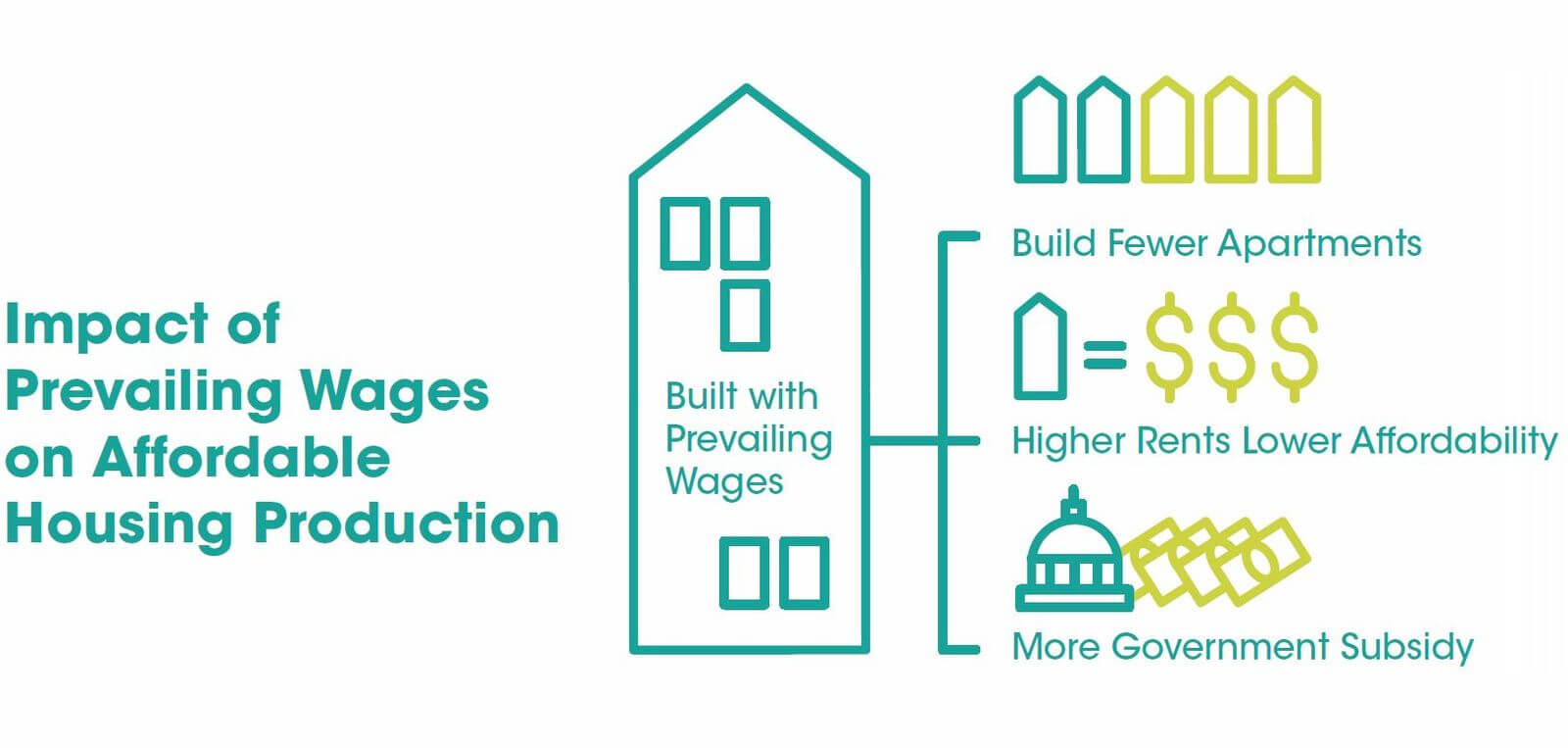Intro
In 2008, CHPC published a report examining the impact of prevailing wage regulations on affordable housing in New York City. The report, called Prevailing Wisdom, scrutinized the implications on housing supply, affordability, government subsidy, racial equity, worker safety, and housing quality.
Public policy should be clear about the problem it intends to solve, how it will address the problem, who it helps, and who it leaves behind.
In 2019, prevailing wages are once again a central topic in New York City and New York State, so CHPC is taking another look at the latest policy thinking on this topic.
CHPC has launched a data portal to provide clarity about the impact and trade-offs of prevailing wages on affordable housing.
Public policy should be clear about the problem it intends to solve, how it will address the problem, who it helps, and who it leaves behind. Policy should also be data-driven and understood within economic, social, and political contexts. CHPC created the prevailing wage data portal to provide clarity about the challenges, benefits, and trade-offs involved in prevailing wage policies for affordable housing construction.
Use the CHPC’s Data Portal to explore answers to questions such as:
- How much does the prevailing wage raise the wages of the city’s construction workers and does it help some workers more than others?
- How do wages in the construction industry stack up against other sectors?
- How many workers are represented in different sectors of the workforce?
- How do wages in construction and other job sectors compare to AMI levels?
- What is the gap between entry-level and experienced-level wages in various occupations?
LABOR MARKET DATA
Click more topics below to see their interactive and sortable data tables.
- Wage Comparison Between Davis-Bacon Prevailing Wages and DOL’s Occupational Wages for New York City
- Wage Comparison Between Article 8 Prevailing Wages and DOL’s Occupational Wages for New York City
- Wage Comparison Between Davis-Bacon Prevailing Wages and BLS’s Occupational Wages for New York City
- Wage Comparison Between Article 8 Prevailing Wages and BLS’S Occupational Wages for New York City
- Wage Comparison Table Technical Note
- Sortable Davis-Bacon Prevailing Wage Schedule for New York City
- Sortable Article 8 Section 220 Prevailing Wage Schedule for New York Cit
Click here to download all data tables.
This is an example of a sortable table:
Social & Economic Policy Topics related to prevailing wage policy
Prevailing wages are about more than just income. In addition to wages themselves, prevailing wage proponents have multiple other socioeconomic goals that they aim to achieve. Meanwhile, opponents fear that prevailing wage policies will interfere with other social policy goals. CHPC is exploring available research and data to assess such claims. These are some of the topics that CHPC is exploring.
Impact of prevailing wages on ...

Click here to explore the table 2018 Hourly Wage by Occupation Category in the New York City Region
Click here to explore the table 2018 Hourly Wage by Occupation Category in the New York City Region
Click here to explore the table Average Entry Level & Experienced Wage for Project High Growth Jobs in NYC, 2014-2024
Prevailing wage policies are unlikely to increase wages for undocumented workers on construction sites. On the contrary, the increase in oversight may dissuade contractors from employing these workers. Depending on your perspective, it is either advantageous to discourage the practice of hiring undocumented New Yorkers, or it makes the financial situation of these New Yorkers more tenuous during a period when they are already particularly vulnerable.
Labor & housing policies since 2009 related to prevailing wage policy
ACA was enacted in 2010 and greatly expanded healthcare coverage in the private market and through Medicaid. Greater access to benefits, including health coverage, is one of the core advantages that prevailing wage policies hope to achieve. The passage of ACA is a more direct way to mandate healthcare coverage, though recent challenges to ACA’s mandate may compromise that mission.
The minimum wage for all New York State and New York City workers has gone up to $15 since CHPC’s 2009 report.
In 2017, The NYC Council enacted Local Law 196, which mandates that all construction workers, on both prevailing and non-prevailing wage sites receive safety training.
In 2017, the renewal of the 421a tax abatement (later known as the Affordable New York Housing Program tax abatement) required a minimum average wage for projects over 300 units that receive the tax benefit. For projects in Manhattan, the required minimum average wage is $60/hour. For projects in the other four boroughs, the minimum average wage is $45/hour. Please note this is a minimum average wage for all construction workers on the site, and not a minimum wage, (ie, many workers may still earn less than $45 per hour).
